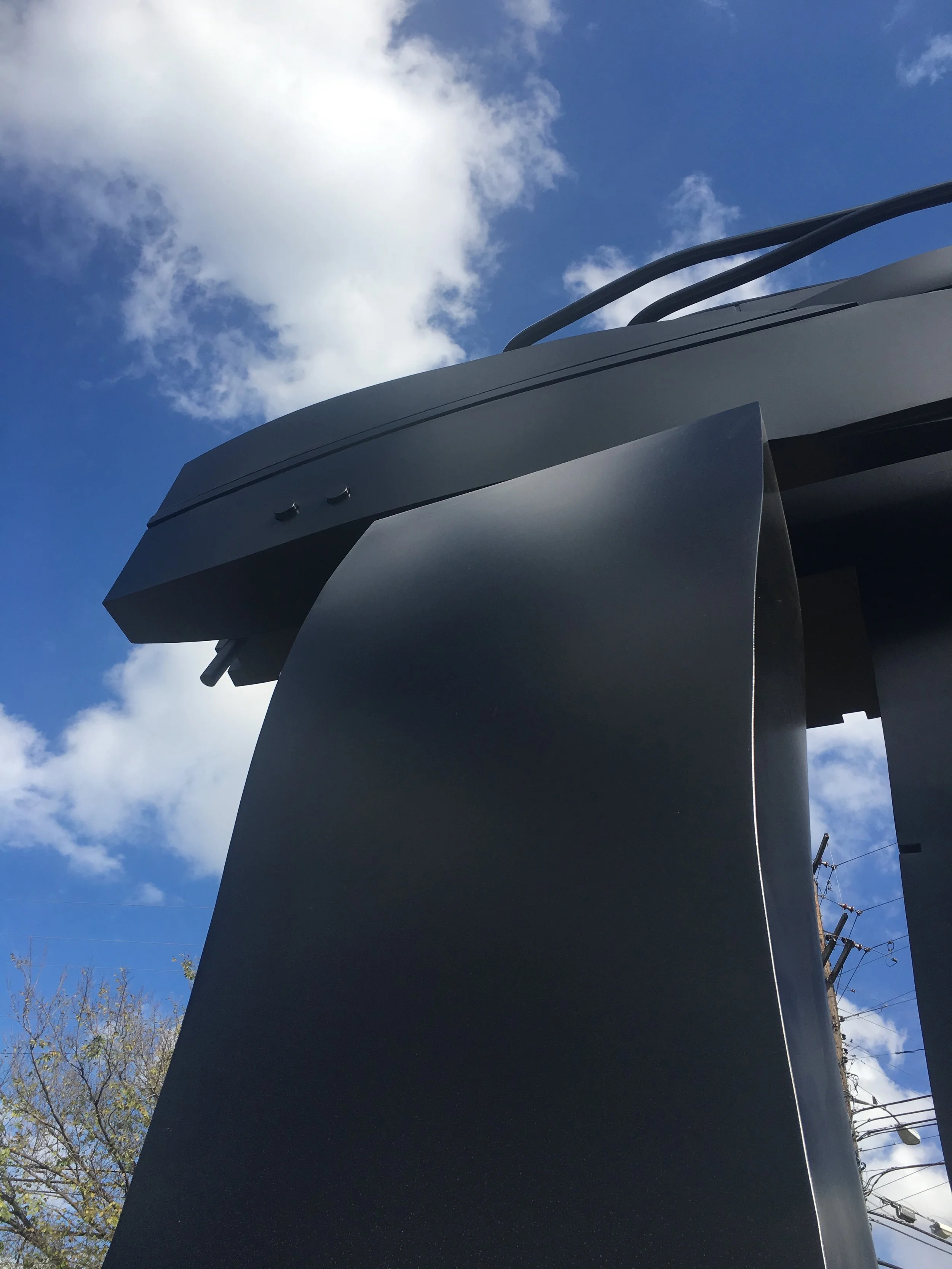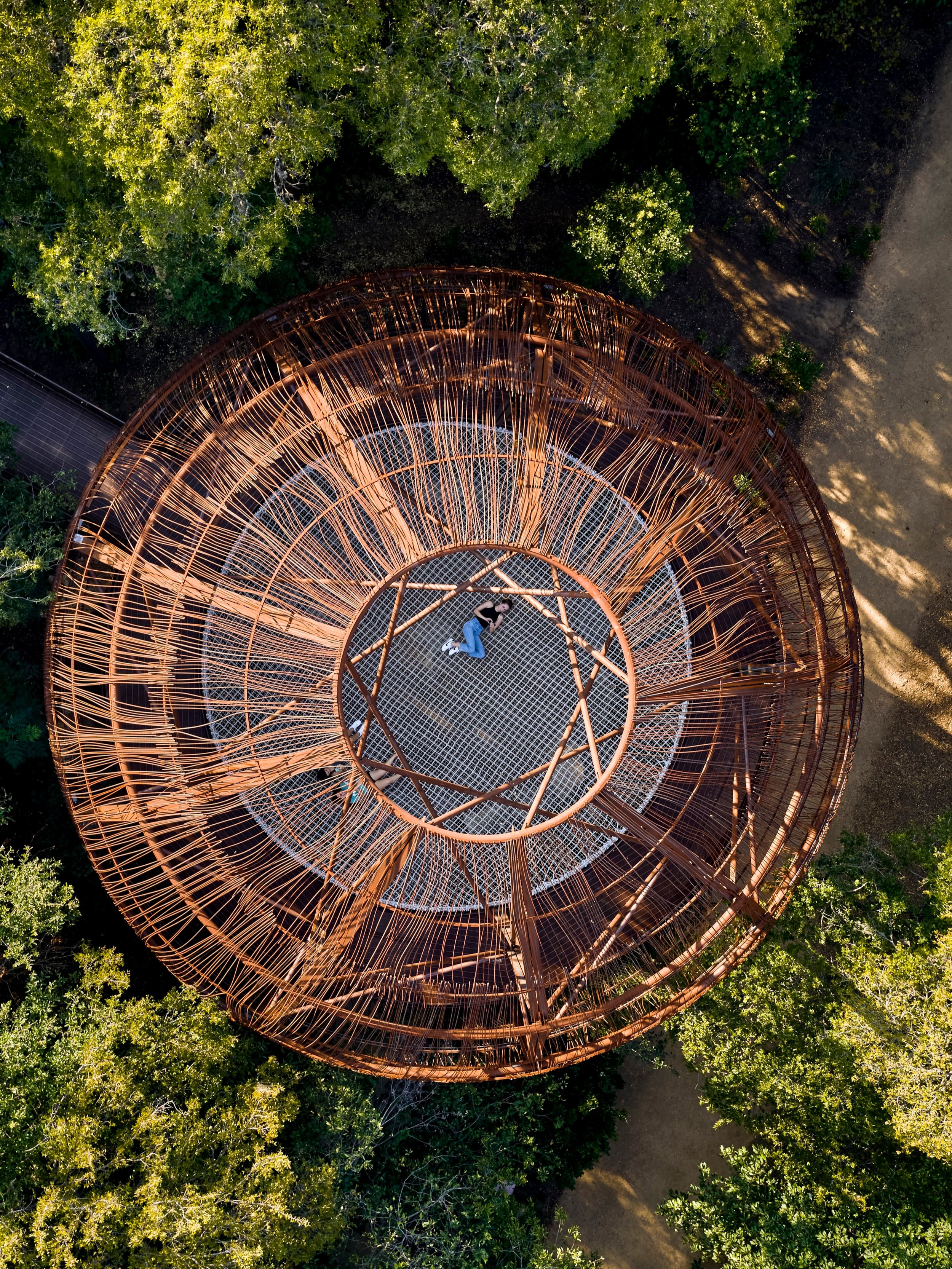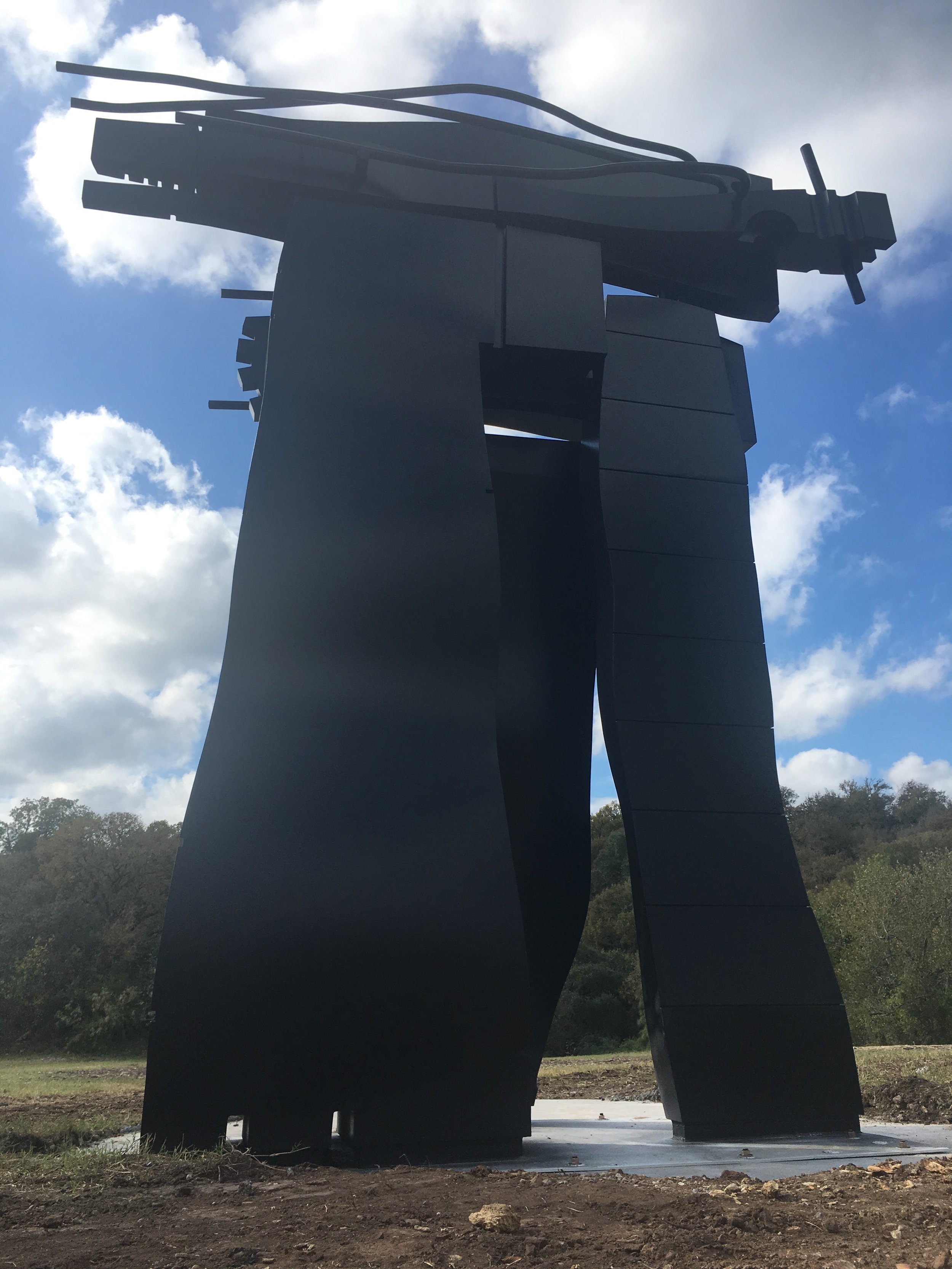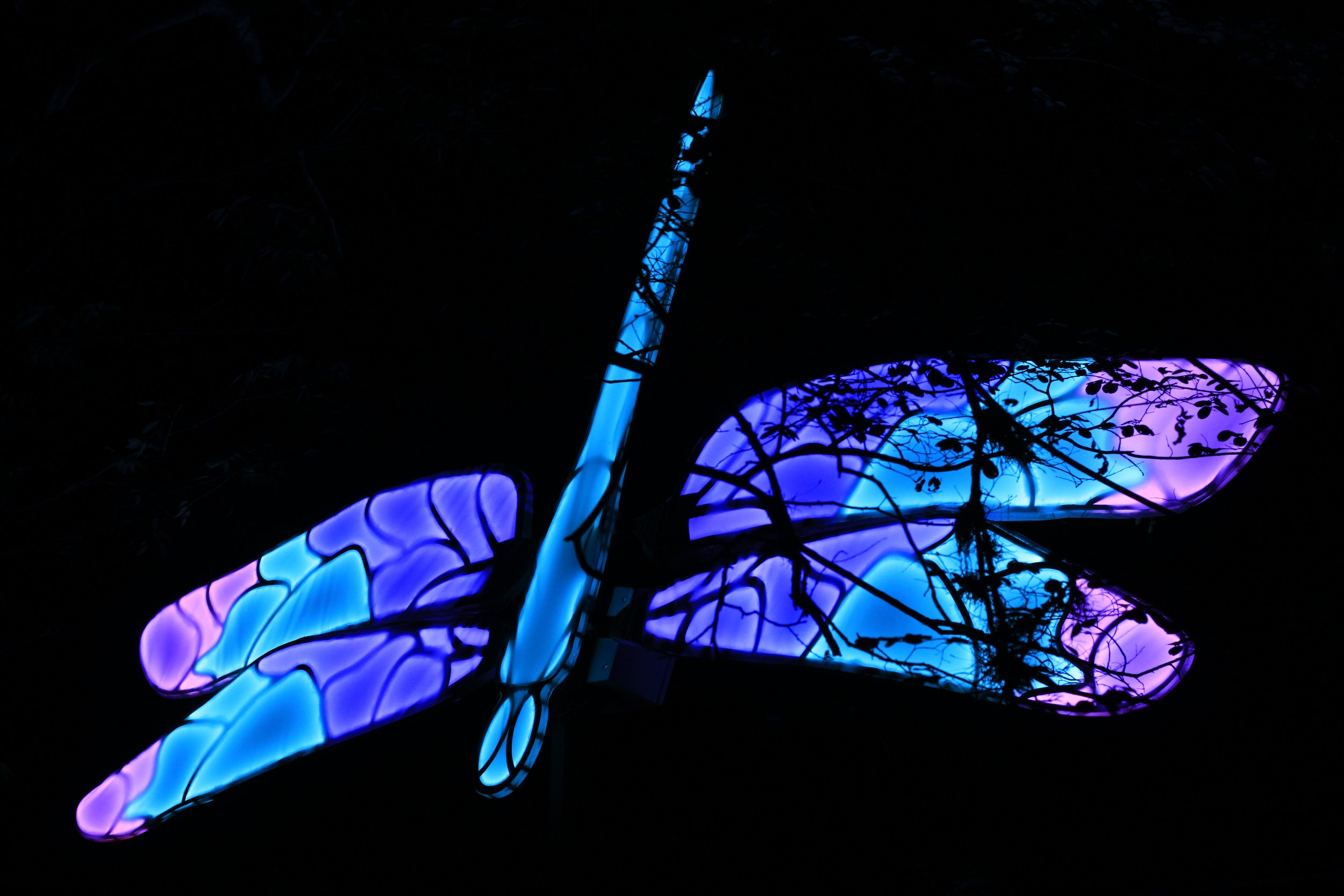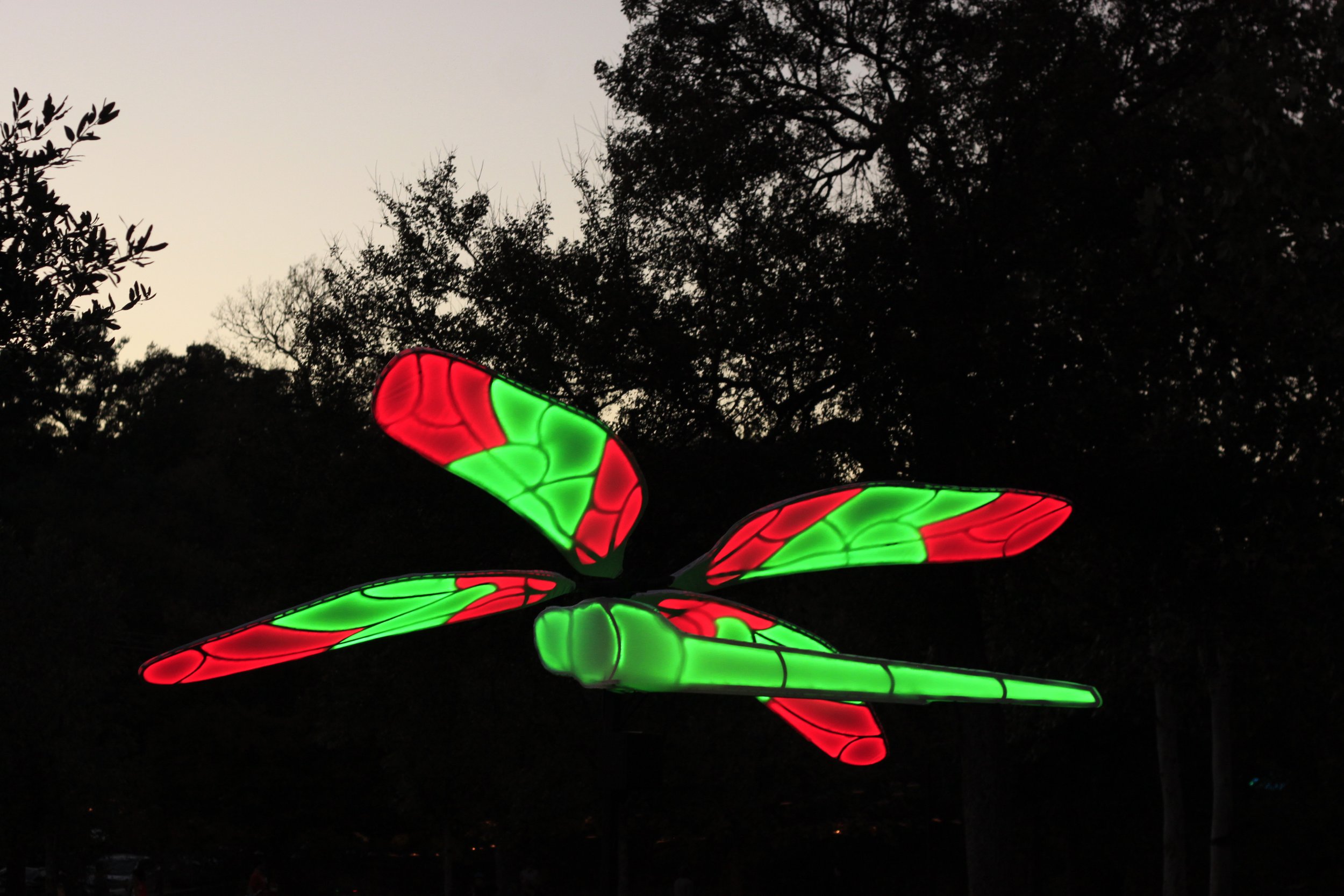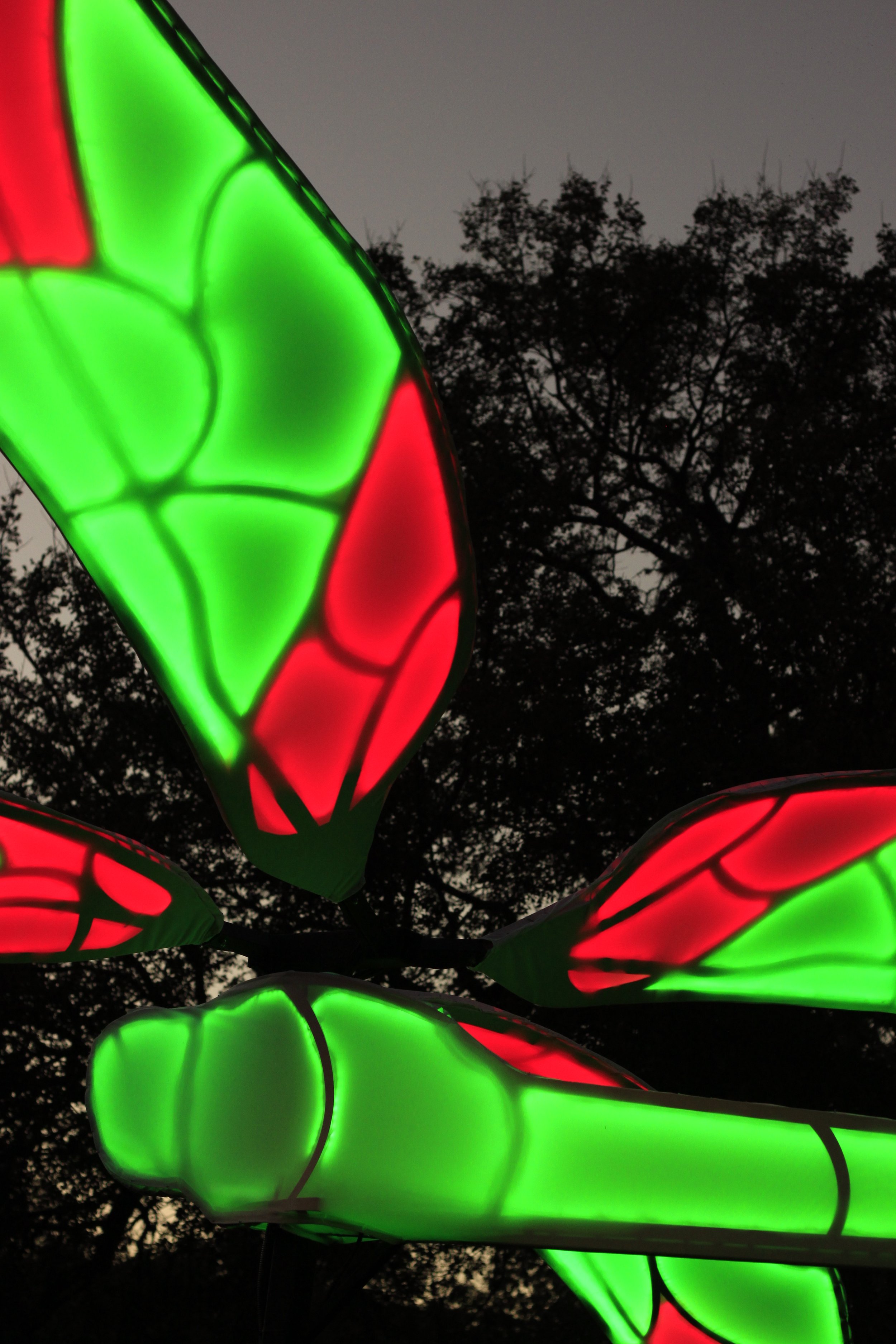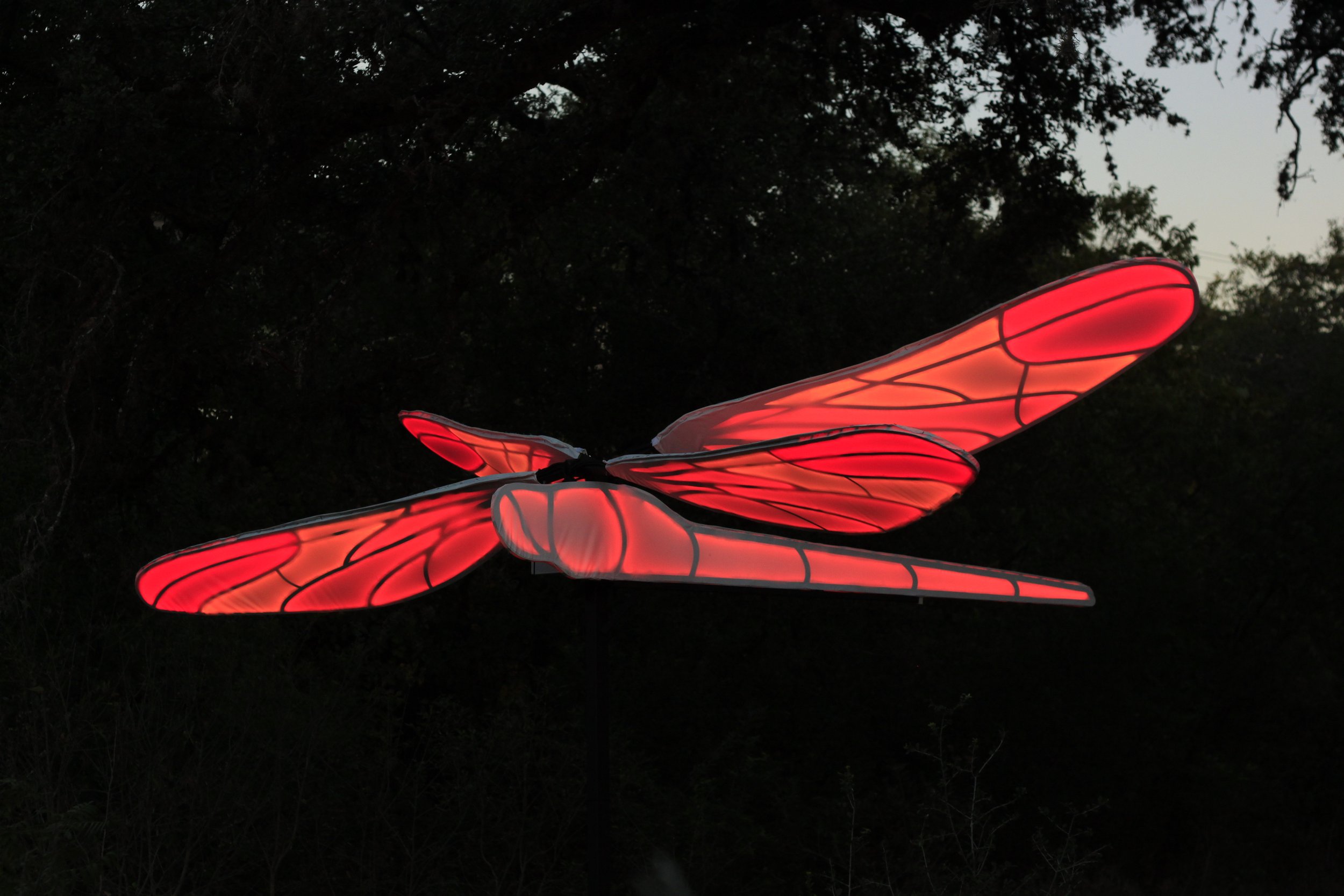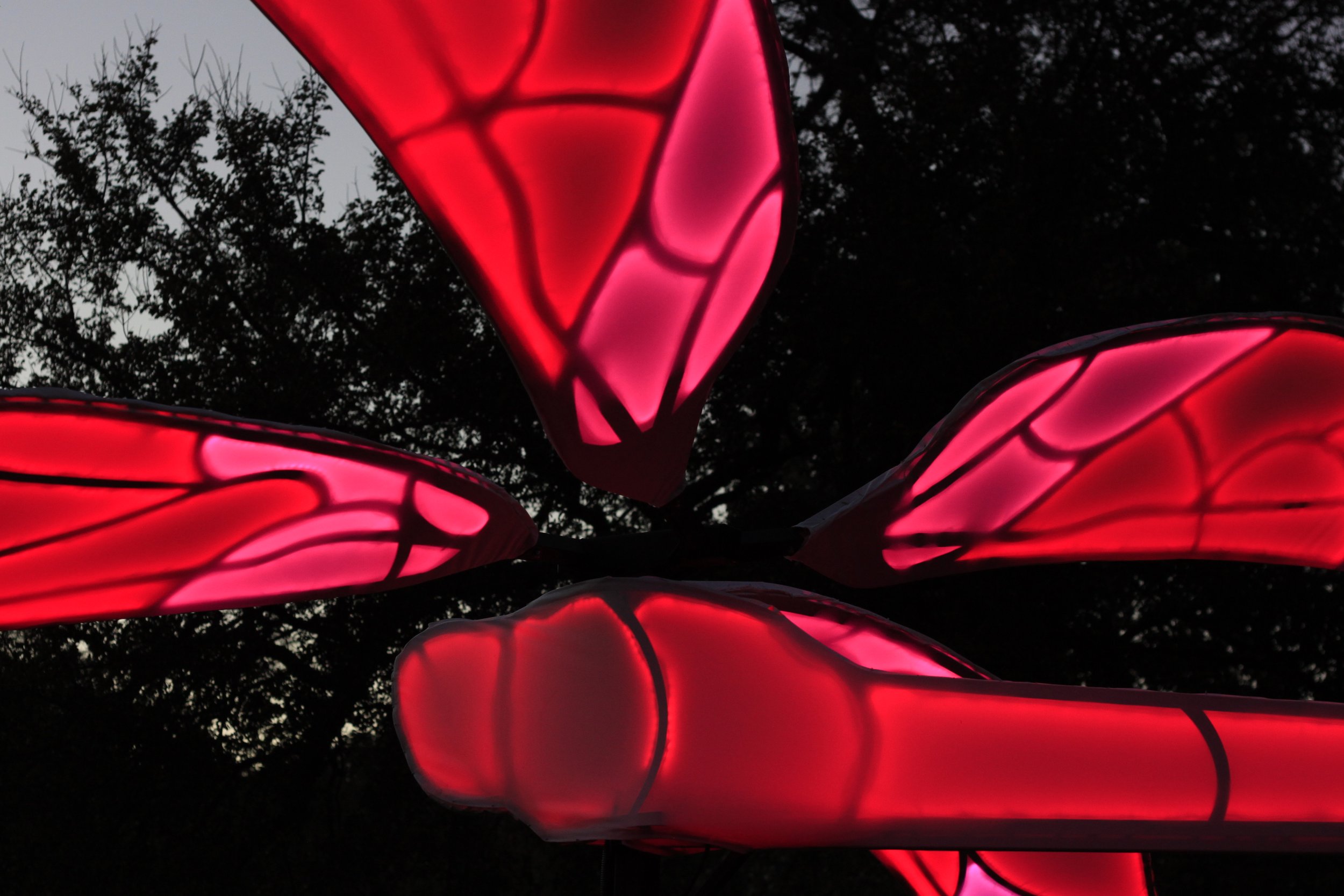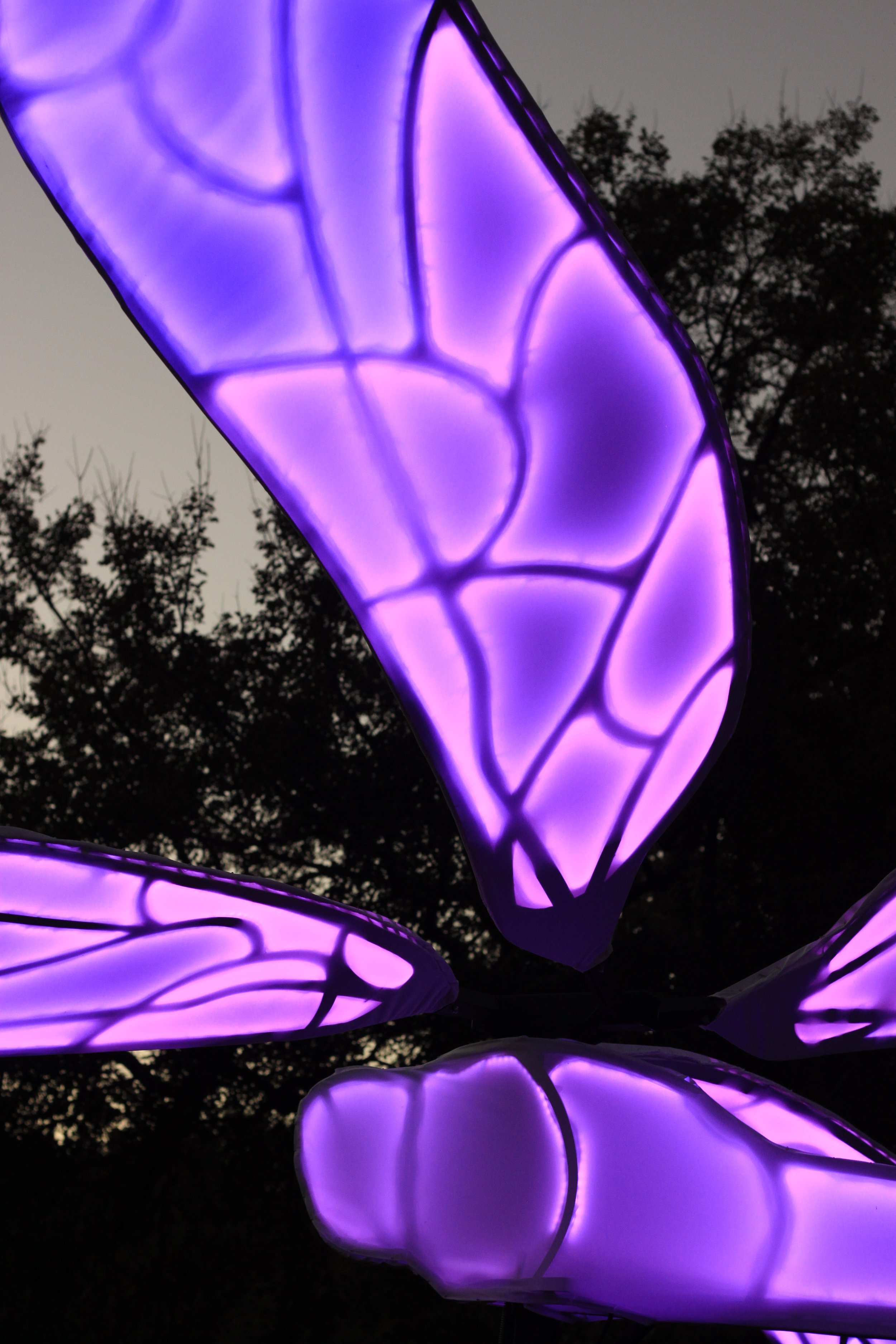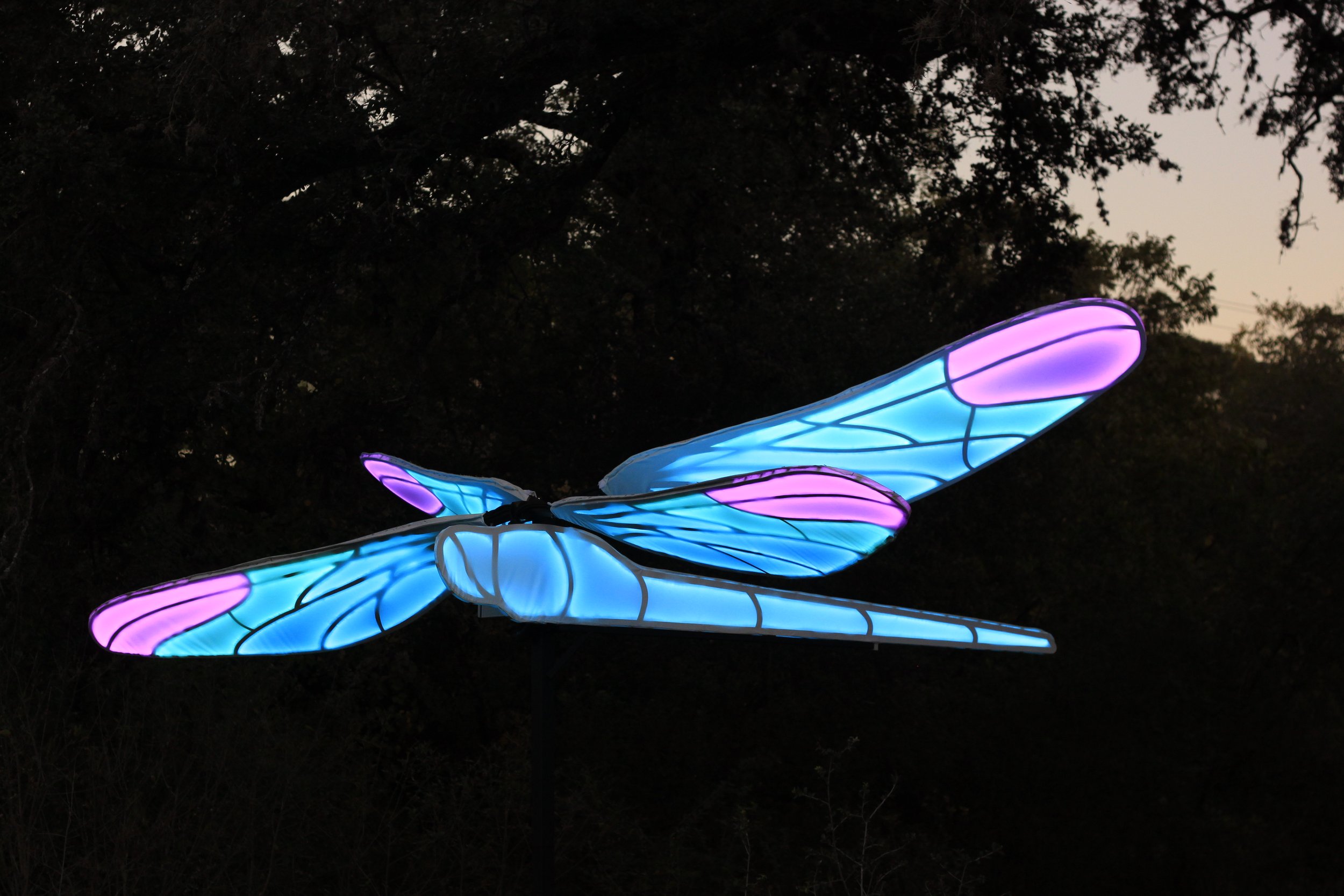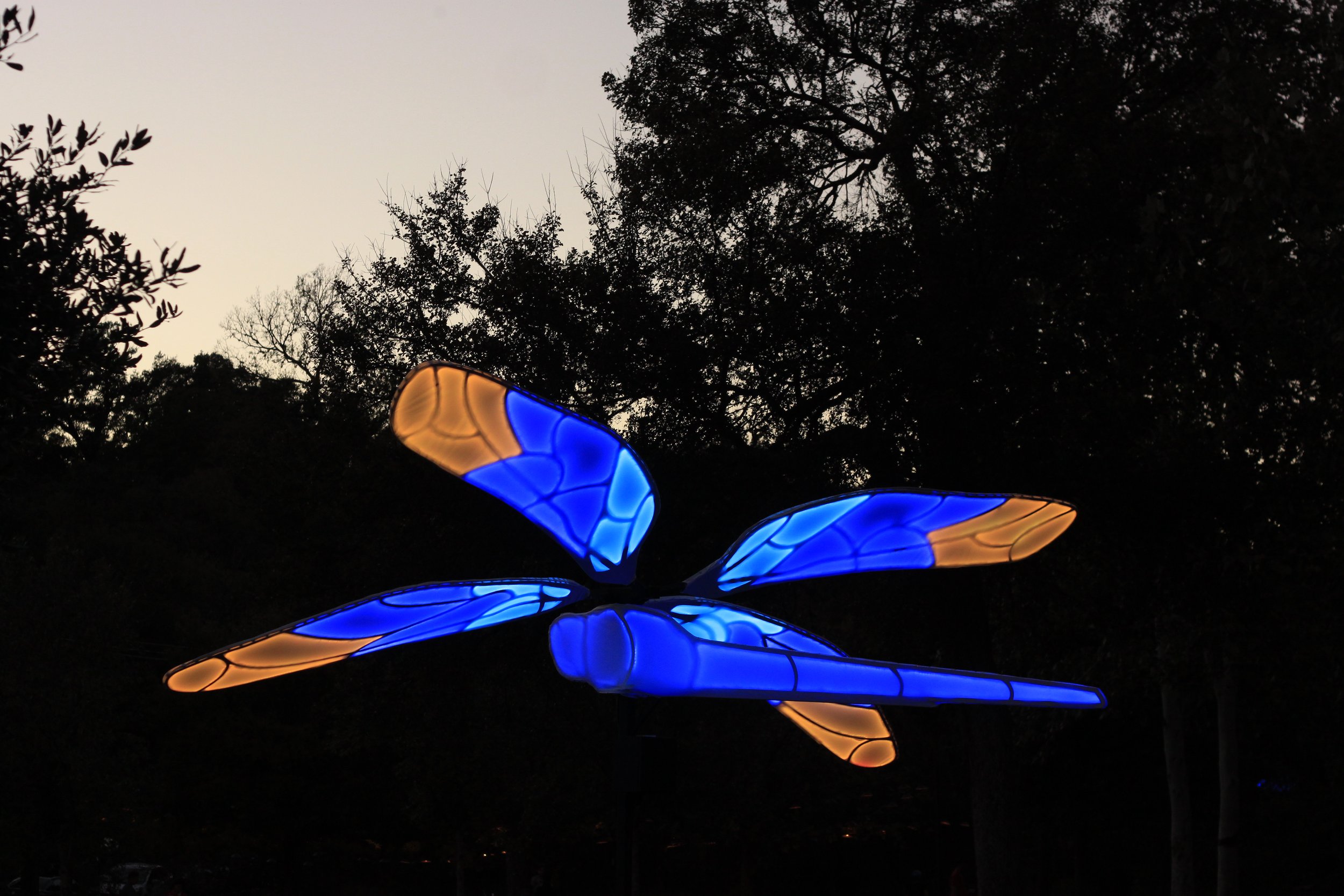Thomas Dambo Troll: Malin’s Fountain
Malin’s Fountain, Pease Park’s Troll Sculpture, by Thomas Dambo, was completed in March of 2024 and will be in place for 15 years. Malin is a water protector. More than 80% of the materials used to build Austin’s beloved troll were recycled, repurposed, or found.
We invite you to take the Troll Trek to visit Malin. She is installed just north of Kingsbury Commons in a wooded area alongside the Shoal Creek trail.
To learn more about Malin, Thomas Dambo, and this art installation project, please visit our FAQs here.
If you need assistance visiting Malin, please reach out to us at info@peasepark.org.
The Treehouse
As part of the redesign of Kingsbury Commons led by Ten Eyck Landscape Architects, Mell Lawrence and Clare van Montfrans created the Tree House to offer Pease Park visitors an immersive experience of the tree canopy, creating a place for both rambunctious play and quiet reflection for people of all ages and abilities.
The Tree House is open to the elements and engages all the senses - the sun provides warmth in the winter, leaves offer shade in the summer, the wind blows through. It carves out an elevated, occupiable void in the forest - as the canopy densifies over the years, the space will be defined more by the surrounding trees than the structure itself. A vertical lattice of rebar forms a reed-like enclosure, participating in the shadow play of the forest.
MYSTIC RAVEN
In partnership with The Contemporary Austin and their Museum Without Walls program, we're thrilled to host David Deming's Mystic Raven in Lamar Terrace near 29th and Lamar. Deming taught at the University of Texas Austin from 1972-1996, serving as the Chair of the Art Department from 1992-1996 and Dean of of the College of Fine Arts from 1996-1998. He left UT to work as President of the Cleveland Institute of Art until his retirement in 2010.
Mystic Raven is a sculpture that evokes man, bird, and machine. It was the first monumental piece placed in downtown Austin, where it was displayed in front of the First City Centre on Congress Avenue. The sculpture's bold forms and impressive scale convey the sublime experience of being overwhelmed by nature. Mystic Raven was executed in 1983 as a symbol of growth, change, and progress. The sculpture also demonstrates Deming's interest in physics, and he experimented with the tripod as a 'symbol of separate parts drawn together in unity'.
For more information about Mystic Raven and the Museum Without Walls program visit The Contemporary Austin
PAST INSTALLATIONS
Enter The Dragonfly
Enter the Dragonfly envisioned the ecological restoration and transformation of Shoal Creek as a healthy habitat for a diversity of native life. Dragonflies are one of the oldest and most reliable indicator species of a thriving and stable aquatic ecosystem.
Enter the Dragonfly was in Kingsbury Commons during 2024 and consisted of four larger-than-life metal dragonflies. Using scale and light, the sculptures visually brought attention to the critical relationship between urban and natural environments.
The pieces were previously exhibited in Waller Creek as a part of Waterloo Greenway’s Creek Show in 2022.
Yippee Ki Yay
Patrick Dougherty, world-renowned artist, created one of his majestic Stickwork sculptures in Pease Park in January 2018. Constructed entirely of locally-harvested invasive tree saplings, including ligustrum, depression willow, ash and elm, branches were woven into a monumental and imaginative sculpture along the Shoal Creek.
The interactive spirit of the project and its whimsical nature aimed to spark the imagination of park visitors and embody the goals of the Pease Park Conservancy to utilize public art as a tool to raise community consciousness and reinforce an authentic sense of place.
The Blue Trees by Konstantin Dimopoulos
The Blue Trees was an environmental art installation by Konstantin Dimopoulos intended to help visitors notice and contemplate the importance of trees and forested areas. A natural blue colorant was applied to the trunks of the trees just north of Kingsbury Commons to create a striking visual. The colorant applied was not a paint; it was a water-based pigment that did not harm the trees. This blue colorant was expected to wash away after several months; however, due to the deeply fissured bark of some species of Central Texas trees and lasting drought conditions in the area, the colorant has not washed away as expected. Arborists have confirmed that the blue colorant has not damaged the health of the trees, and we expect the blue tint to continue to fade over time. But, we acknowledge that the timeline of this art installation was not what we anticipated.
Read about Art in Public Spaces, by Nicole Netherton, CEO of Pease Park Conservancy

